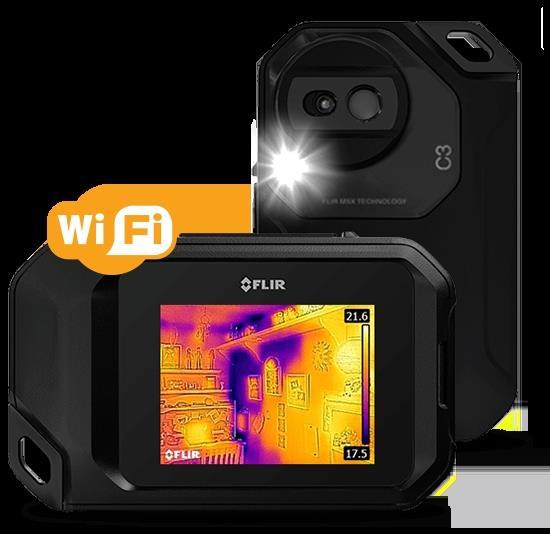Thermal Imaging CameraThere are two major central functions: temperature measurement, imaging. If you want accurate temperature measurement, you have to talk about a keyword-launch rate. Why is that? And how to set the launch rate precisely?
Thermal imaging cameras passively receive objects emitted by the invisible infrared radiation, into a visible thermal image, the graph of different colors represent different temperatures. The infrared radiation received contains the object's own emission, reflection, and transmission, but only the emitted radiation can understand the temperature condition of the object.
What is the launch rate?
The emissivity is the ability of different objects to emit infrared radiation, and setting accurate emissivity values is helpful for accurate temperature measurement. It is a coefficient that is between the 0~1. The larger the number, the higher the emission rate, the stronger the infrared radiation. The black body is an aspiring object with a launch rate of 1, with only emission radiation and no reflection.
The emissivity of an object is related to the raw material, exterior structure, temperature and so on of the object. General electrical insulation, thermal insulation materials such as wood, rubber and other emission rates are relatively high, metal emissivity is low. The emission rate of the drop was ignored by the external polishing, and the increasing emissivity was ignored in the scrub.
What are the ways to help with accurate temperature measurements?
Depending on the emission rate of the object under test itself, there are several ways:
1. Direct measurement
Suitable for: objects with a high azimuth emissivity (greater than 0.6) being measured.
Operation method: For objects with a emissivity of more than 0.6, it is possible to compare the number of emission rates
2. Indirect measurement
Application: The emission rate is low, but the object has a higher emissivity, and the same temperature as the place where it needs to be measured.
Operation method: Can directly measure the high emissivity area. The specific operation is the same as the method.
3, the appearance of adhesive insulation tape
Applicable occasions: The emission rate is low, the measured policy is relatively large, the temperature is low (less than 100 ℃), the requirement does not change the original policy appearance condition after the test, such as metal appearance.
Operation method: Affixed insulating tape (3M electrical tape). When the insulating tape is combined with the temperature of the object under test, the thermal imager emissivity is set to 0.95 for measurement.
4, the appearance of paint
Applicable occasions: can be applied to the low emissivity, high temperature policy, but also applicable to the principle of small size of the situation. For example, pipes, irregular heatsinks, etc.
How to do this: use black paint or paint to spray the appearance of the object. When boring and in conjunction with the temperature of the object under test, the thermal imager emissivity is set to 0.9 to measure the temperature of the paint area.

Related News
- Application range of infrared thermal imaging camera
- What are the steps for daily inspection of building infrared thermal imaging cameras
- Sales channels and methods of portable thermal imaging cameras
- Principle Analysis of Thermal imager
- How to do a good job in the daily maintenance of FLIR thermal imaging cameras
- Techniques for measuring Infrared Thermal Imager
- Functional features of Infrared imager
- How to buy a building thermal imaging camera
- Infrared Thermal Imager Focal length adjustment method
- Application of infrared Thermal Imager in different industries
- Application techniques and features of infrared thermal imaging camera
- Small details you need to know to use an online thermal imager
